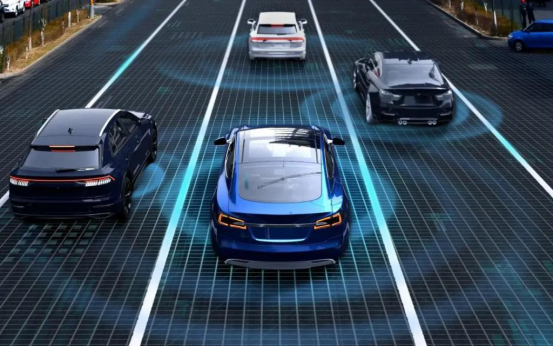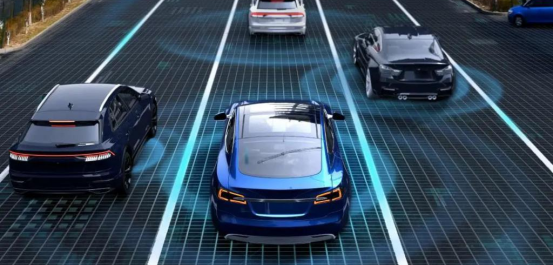Author: Yunge
Since Google’s self-driving project started in 2009, autonomous driving has attracted a large amount of capital attention. In 2016 alone, companies such as Xiaoma Zhixing, AutoX, JingChi, and Momenta received capital favor and quickly grew into unicorn companies.
After more than a decade of development, policy and industrial competition in the field of intelligent networked vehicles are also intensifying.
On November 2nd, the “Notice on Carrying out Pilot Work for Access and Road Test of Intelligent Networked Vehicles (Solicitation of Comments)” co-drafted by the Ministry of Industry and Information Technology (hereinafter referred to as MIIT) and the Ministry of Public Security (hereinafter referred to as MPS) was released. As the first national-level management guidance document for pilot access and road testing of intelligent networked vehicles, it has attracted wide attention once it was released.
In fact, there are precedents for admission clauses for intelligent networked vehicles in the international community.
In April 2020, the revised “Road Transport Vehicle Law” and “Road Traffic Law” of Japan officially came into effect, allowing drivers to take their hands off the steering wheel and use their phones or watch in-car TVs while the vehicle is in autonomous driving mode. In March 2021, Honda’s first L3-level autonomous driving production car was officially launched.
In May 2021, the German Federal Parliament passed the draft of the “Autonomous Driving Act”, which allows unmanned driving vehicles (L4 level) to drive in designated areas of public roads from 2022. At the end of 2021, Germany approved Mercedes-Benz to equip some models with L3-level autonomous driving systems.
 # Introduction
# Introduction
In terms of autonomous driving policies, China mainly focuses on road testing and demonstration operations. According to the statistics of the Ministry of Industry and Information Technology, as of the end of September 2022, over 1600 automatic driving road test and demonstration application licenses have been issued nationwide, and over 8500 kilometers of roads have been opened for testing, with a total test mileage exceeding 37 million kilometers.
According to the National Development and Reform Commission, by 2025, the number of intelligent vehicles in China will reach 28 million, with a penetration rate of 82%.
What is true autonomous driving like? Is autonomous driving technology safe and reliable? When will autonomous vehicles become available for the general public?
National Pilot Access Program Launched
In recent years, China has made breakthroughs in research and development of key technologies for smart connected vehicles and product testing demonstrations. However, the standards for autonomous driving technology, both domestically and internationally, are yet to be perfected, and commercializing autonomous driving application faces difficulties. The release of the “Solicitation for Opinions” has opened up channels for testing future commercialization of autonomous driving.
The “Solicitation for Opinions” contains two main components: “Smart Cars” and “Precise Roads”.
Regarding “Smart Cars,” on the basis of the nationwide work of intelligent connected vehicle road testing and demonstration application, the Ministry of Industry and Information Technology and the Ministry of Public Security will select motor vehicle production enterprises and intelligent connected vehicle products equipped with autonomous driving functions that meet the conditions of mass production to launch a pilot access program.
The Ministry of Industry and Information Technology stated that, on the premise of ensuring safety, the pilot work can promote the improvement of the function and performance of intelligent connected vehicle products, as well as the iteration optimization of industry ecology. In addition, based on the empirical accumulation of pilot programs management experience, it can provide support for subsequent related laws, regulations, and standards.
It should be noted that intelligent connected vehicles mentioned in this solicitation are vehicles equipped with Level L3-conditional autonomous driving and L4-highly autonomous driving functions. Currently, the automatic driving function of intelligent connected vehicles on the market is only at the L2 level of driver assistance according to national standards.
Regarding “precise roads”, intelligent connected vehicle products that have passed the admission pilot program are allowed to conduct on-road pilot testing within designated public road areas in pilot cities. This is also the Chinese solution that combines “bike intelligence + vehicle-road coordination” for autonomous driving.
It is worth noting that the admission pilot program for intelligent connected vehicles requires the leading government department of the trial city to take the initiative to form a joint group together with the automobile production enterprises and user entities who plan to apply for the pilot program. The application is voluntary.
The joint application group is an innovative attempt, which directly connects the government, the vehicle manufacturers, and the operating companies through the joint application for admission pilot program. As autonomous driving technology evolves, a single industry can no longer achieve efficient breakthroughs in the current development impasse of autonomous driving. Through joint application groups, the cooperation barriers among all links of the upstream and downstream industries can be broken, the efficiency of the industry chain cooperation can be improved, and ecological win-win can be achieved.
Besides, regarding the issue of accident liability that the public is most concerned about, the “solicitation draft” has made detailed provisions: safety personnel are still required to sit in the driver’s seat during actual operation. If a traffic accident occurs when the automatic driving system is not activated, the safety personnel in the vehicle will be held liable; if an accident occurs in the activated state of the system, the pilot entity will bear the responsibility.
Undoubtedly, the “solicitation draft” has directly promoted the development of intelligent connected vehicles. Wang Yu, the executive deputy secretary-general of the China Center for Promotion of Productivity, said: “The release of this solicitation draft is timely and a key move to promote the innovation of intelligent connected vehicle technology and high-quality development in China. It promotes the sustainable development of the intelligent connected vehicle industry and is a crucial step in promoting autonomous driving from technology research to industrialization.”
Local Governments Competing for Dominance in the IndustryThe “Draft for Soliciting Opinions” is not the only policy for intelligent connected vehicles (ICVs) recently. On October 28th, the Ministry of Industry and Information Technology released the “Regulations on the Access License Management of Road Motor Vehicle Production (Draft for Soliciting Opinions)”, which introduced a large number of management requirements for ICVs.
Within just one week, two heavy-weight policy documents for ICVs were released, which reflects the current high-speed development of ICVs.
With the gradual improvement of L2 products, many institutions predict that the transition from L2 to L3 and L4 will be completed within the next 2-3 years. In the next three years, the ICV industry chain will continue to accelerate its development centered on cities. In order to seize the advantage, local governments have issued a series of relevant policies. Shenzhen and Shanghai have taken the lead in legislation.
On August 1st, China’s first regulation for ICV management, “Shenzhen Economic Special Zone Regulations on the Management of Intelligent Connected Vehicles”, was officially implemented. The regulations provide comprehensive and specific provisions for the driving, use, and accident liability of smart cars. As the first city to take action, Shenzhen uses legislative power to create a more open operating environment for autonomous driving.
On the day when the “Draft for Soliciting Opinions” was released, the Standing Committee of the Shanghai Municipal People’s Congress deliberated on the “Regulations on Promoting Innovative Applications of Intelligent Connected Vehicles in Pudong New District, Shanghai (Draft)”. As the second city to legislate for ICV application in China, Shanghai provides strong legal guarantees to promote the high-quality development of the ICV industry.
Regarding the ICV legislation documents issued successively in Shenzhen and Shanghai, Secretary-General Wang Yu believes that “the legislation in Shenzhen and Shanghai not only actively promotes the development of the autonomous driving industry but also accumulates relevant data and experience. Accumulating data and experience will provide reference and inspiration for other cities and national-level relevant policies and regulations, which will help promote the development of more detailed and perfect regulations. This will play a very positive role in promoting China’s autonomous driving legislation and even the entire industry development.”
Enterprise development enters the “fast lane”.According to the data from IDC (International Data Corporation), as of the first quarter of 2022, the penetration rate of Level 2 autonomous driving passenger cars in China reached 23.2%, a significant increase of 15.7% year on year. This consultation draft is for the preparation of the market access and on-road operation of intelligent connected vehicles with autonomous driving functions. With the continuous improvement of relevant laws and regulations, the industry is expected to further accelerate its development.
Since the release of the intelligent “Beidou Tianshu” strategy in 2018, Changan Automobile has established four major system capabilities in software development, software defect management, network security, and functional safety, which can effectively support the research and development of intelligent driving technology and product application services. Currently, it has the capability and application of intelligent driving in scenarios such as highways, parking lots, and some urban areas.
As an independent operating brand of Guangzhou Automobile Group, GAC Aion has launched the “Xingling” architecture in the field of intelligent connected vehicles, which can support L4 and above high-level autonomous driving in the future, bringing users a full-scenario autonomous driving experience on highways and city roads. From AION S to AION LX, the most intuitive changes in the AION series are about intelligence. The flagship AION LX model has been equipped with a complete set of L2 level driving assistance functions.
When it comes to intelligent cars among new car-making forces, XPeng Motors cannot be ignored. On September 17, XPeng City NGP, an intelligent navigation and driving assistance system, was first launched in the industry. The XPeng NGP function covers users’ driving needs in almost 90% of scenarios from highways, urban expressways to city roads, and its overall travel efficiency is close to 90% of the time taken by human navigation.
 In adapting to policy development, Secretary-General Wang Yu believes that “full vehicle companies should strengthen their design verification capabilities, safety assurance capabilities, safety monitoring capabilities, and user notification mechanisms. Key automotive component companies should revolve around the needs of whole vehicle companies, actively innovate technology, develop products, and form a formidable supply system.”
In adapting to policy development, Secretary-General Wang Yu believes that “full vehicle companies should strengthen their design verification capabilities, safety assurance capabilities, safety monitoring capabilities, and user notification mechanisms. Key automotive component companies should revolve around the needs of whole vehicle companies, actively innovate technology, develop products, and form a formidable supply system.”
With the gradual breakthrough of domestic autonomous enterprises in the field of intelligent connected vehicles, Chinese brands have started to keep pace with the world in the field of intelligent vehicle development, gradually leading the world in terms of Chinese solutions and Chinese standards.
So how far are we from self-driving? In an interview with CCTV, Liu Fawang, Chief Engineer of the Equipment Center of the Ministry of Industry and Information Technology, said, “Self-driving is a gradual process. The ultimate realization still requires three key points: continuous improvement of autonomous driving technology, gradual deepening of safety cognition and understanding, and a deeper understanding of user safety.”
With the progress of technology, unmanned driving scenarios are gradually becoming a reality. Through trial and error, we will explore the safety boundaries of self-driving. With the joint efforts of the entire automobile manufacturing industry and its upstream and downstream industries, self-driving will eventually arrive.
This article is a translation by ChatGPT of a Chinese report from 42HOW. If you have any questions about it, please email bd@42how.com.
